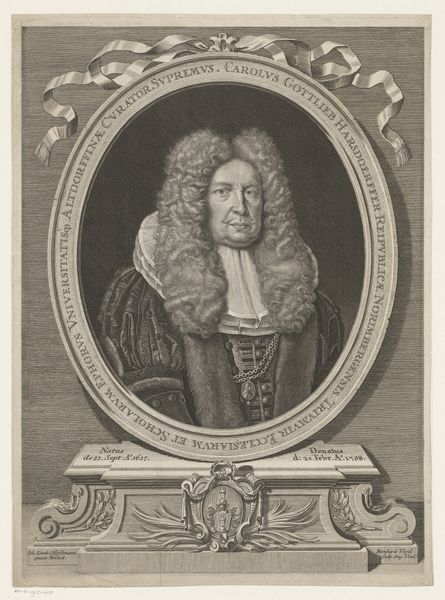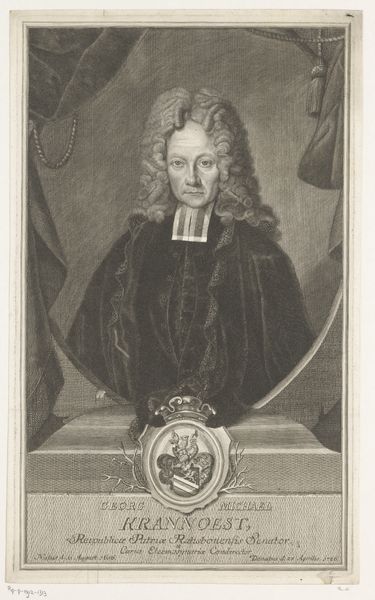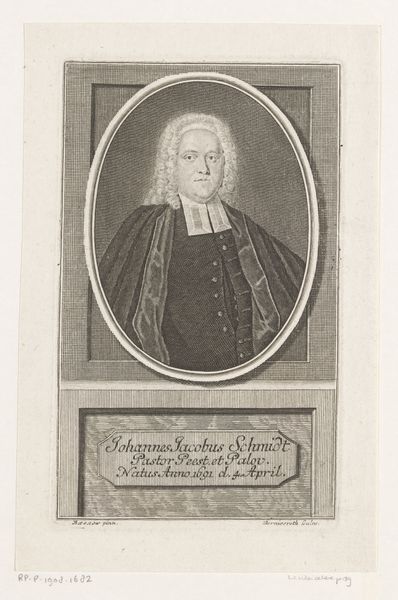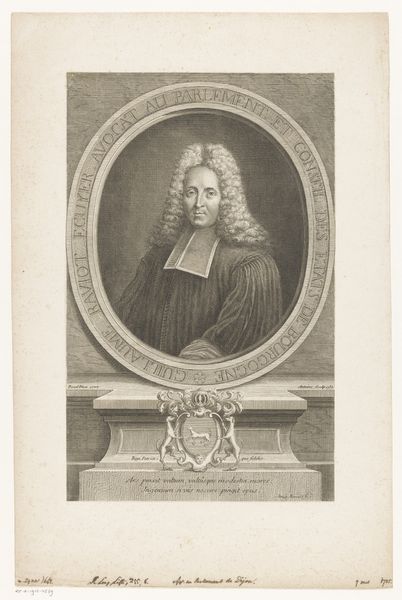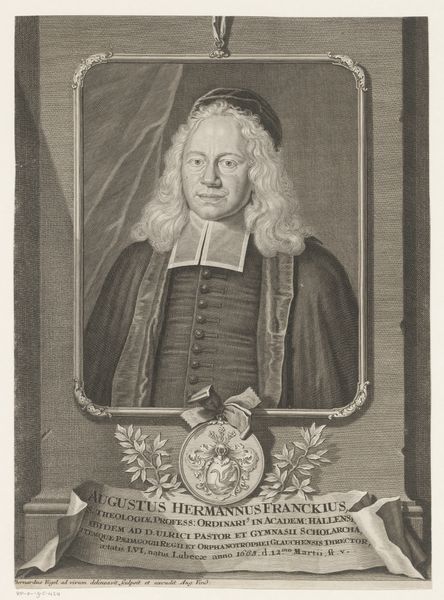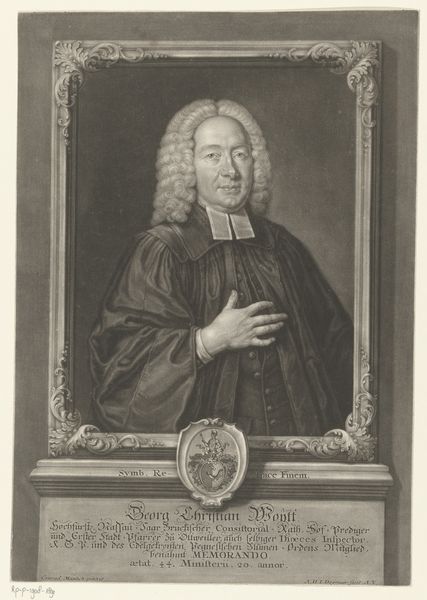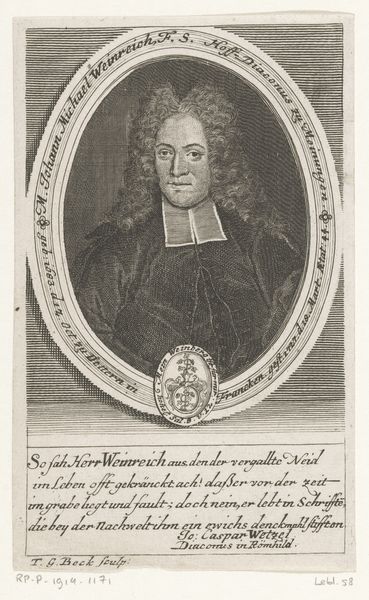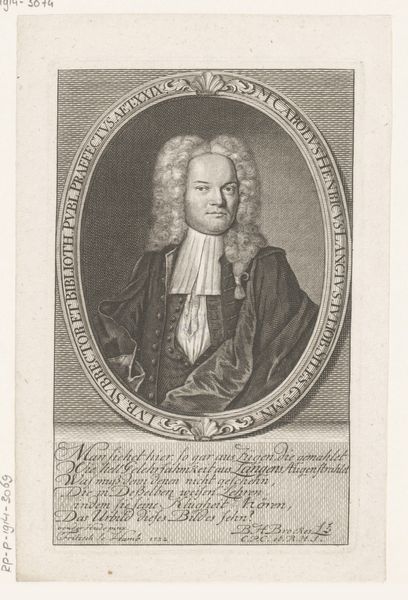
engraving
#
portrait
#
baroque
#
figuration
#
line
#
engraving
#
realism
Dimensions: height 288 mm, width 181 mm
Copyright: Rijks Museum: Open Domain
This is a portrait of Joachim Lange, made by Johann Martin Bernigeroth using engraving. Lange was a senior professor of theology, as the inscription tells us, and so Bernigeroth has chosen to present him in a manner befitting a man of the cloth. Made in Germany, sometime in the mid-18th century, the formal trappings of the portrait would have been very familiar to its original audience. Note the trappings of status: Lange’s elaborate wig and formal robes, presented in an ornate, oval frame. We can compare this image to other portraits of the period to understand the visual codes it deploys. What did it mean to represent a figure of the church in this way? Was it meant to reinforce or challenge existing social norms? By considering the institutions and social conditions in which it was made, we can better understand the public role of art. Historians use archives, publications, and other primary sources to reconstruct these meanings.
Comments
No comments
Be the first to comment and join the conversation on the ultimate creative platform.
